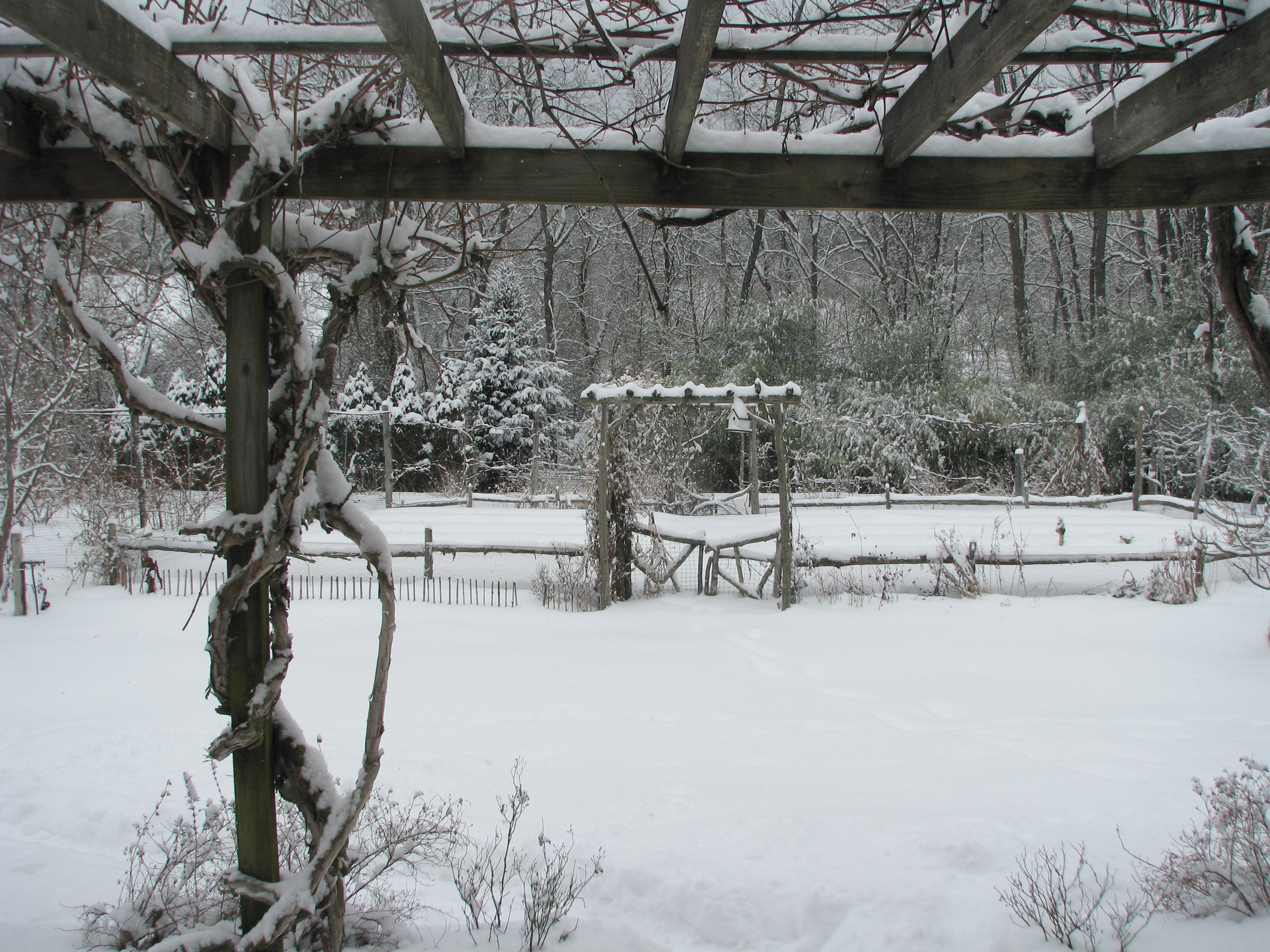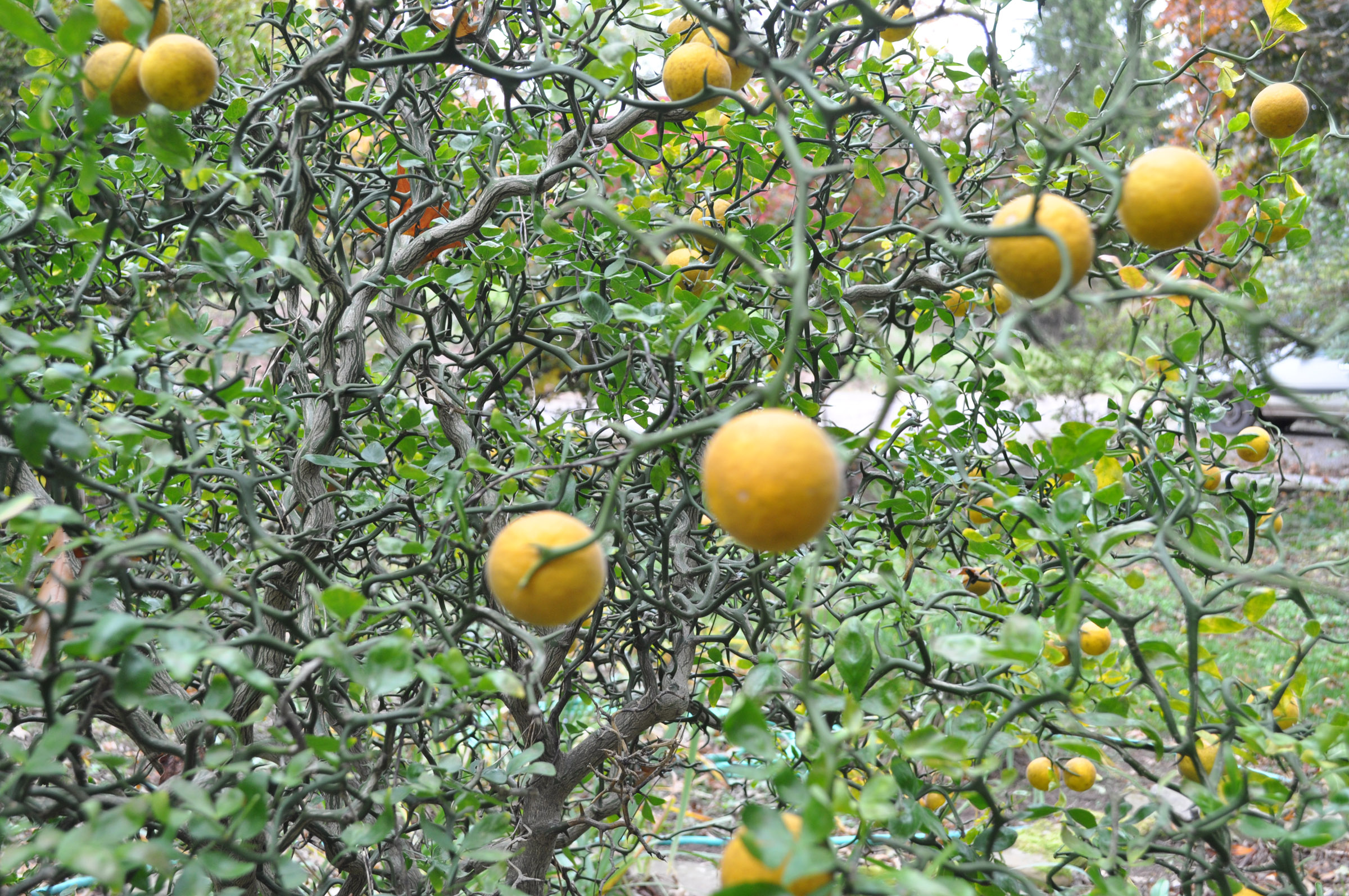THE GARDEN IN WINTER
/6 Comments/in Design, Gardening/by Lee ReichForming Relationships
This may sound crazy but even this far north, winter isn’t a bad time to admire the garden. With leaves and flowers a memory of the past season and a hope for the coming season, the garden is reduced to its bare bones. Not that the wintry scene need be dull or bleak. Good bones give structure to the landscape, knitting it together in some places, dividing it up in others, framing vistas, and providing firm footing for the eyes (figuratively) and feet (literally). Even now.
Three-dimensional forms are what give structure to a landscape. A house usually is the most obvious mass jutting up into space on a property. Too often it’s the only structural element, feebly tied to the landscape with some gumdrop-shaped junipers or yews standing, as if guarding, the foundation.
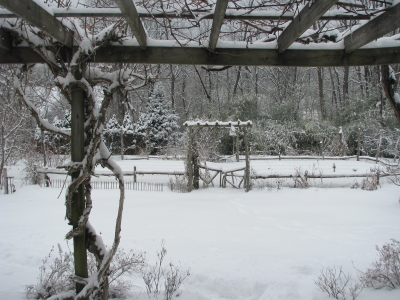 I have effected a relationship between my yard and my house by building a grape arbor out from the rear wall, then enclosing the ground beneath this arbor with a brick terrace (my house is also brick) edged with a low hedge of potentilla. Similarly, the stone wall supporting what previous were slopes at the front and side of my house flow into the landscape with a contiguous stone wall sweeping out across the yard. Read more
I have effected a relationship between my yard and my house by building a grape arbor out from the rear wall, then enclosing the ground beneath this arbor with a brick terrace (my house is also brick) edged with a low hedge of potentilla. Similarly, the stone wall supporting what previous were slopes at the front and side of my house flow into the landscape with a contiguous stone wall sweeping out across the yard. Read more
ORANGES IN NY’S HUDSON VALLEY, OUTDOORS
/9 Comments/in Fruit/by Lee ReichFrightening, Beautiful, Edible
Right now, my hardy orange tree might look at its finest, standing at the head of my driveway against a pure white, snowy backdrop. An orange tree!? Outdoors with a snowy backdrop?! Okay, in all honesty, it’s a bush, not a tree. But it is an orange plant, and it does survive into Zone 5 outdoors. (Temperatures plummeted to 2° F a week ago, and coldest temperatures typically arrive around the end of this month.)
Botanically, the plant was Poncirus trifoliata. I write “was” because a few years ago, this citrus relative was welcomed closer into the citrus fold, with a new official name, Citrus trifoliata. Not all botanists recognize this closer kinship, and insist on keeping the plant in the Poncirus genus.
The kinship of hardy orange with other citrus is obvious from its glossy, forest green leaves, the sweet (but very slight) aroma of its flowers, and its fruits, which are pale orange. 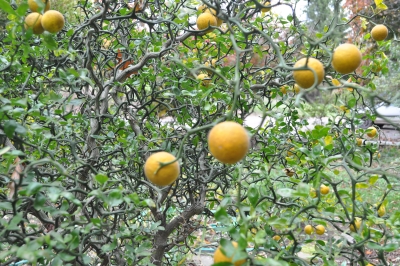 The fruits are edible but I wouldn’t bite into one; the flavor is orangish, but also sour and bitter. Perhaps I’d squeeze the pulp to add a hint of citrus flavor to some other cooked fruit or a baked good. Perhaps not.
The fruits are edible but I wouldn’t bite into one; the flavor is orangish, but also sour and bitter. Perhaps I’d squeeze the pulp to add a hint of citrus flavor to some other cooked fruit or a baked good. Perhaps not.
What I like best about this plant are its stems, which are most evident now, when bared in winter. Read more
GARDEN FRESH, STILL
/11 Comments/in Gardening, Vegetables/by Lee ReichGood Only in Theory?
The idea has merit: flowerpots of flavorful herbs decorating windowsills and providing savory additions to meals through the winter. A good part of last season’s garden is packed in the freezer and glistening jars of canned tomatoes line shelves in the basement. The greenhouse is offering a steady supply of lettuce, arugula, and other salad greens.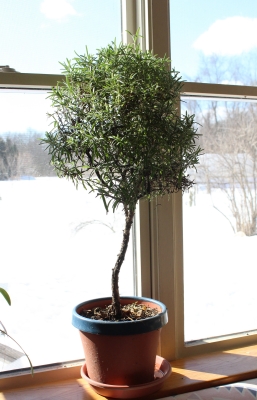
Still, I’m beginning to miss garden-fresh vegetables. Sprinkling some fresh chives on a pan of roasted potatoes might infuse the whole dish with freshness.
The problem is that chives doesn’t thrive on a windowsill, unless the windowsill is very, very sunny. Chives will grow well through the winter with artificial light, but that means a bank of lights permanently poised a few inches above the leaves — so much for the rustic charm of indoor potted herbs. And maybe my taste buds are dulled, but when I snip chives to add to a dish, I take a handful. The plant would need at least a few weeks to recover sufficiently to withstand another harvest.
The same could be said for growing parsley indoors; after each picking, you have to wait too long for another.
I haven’t thrown up my hands at the possibility of growing culinary herbs indoors through the winter. I just have to be very selective in what I grow. Any such herb must pack a lot of flavor into each leaf, survive well indoors, and look pretty. I offer at least two candidates: rosemary and bay laurel. Read more

